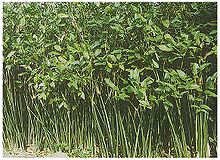
Chittagong Division, officially known as Chattogram Division, is geographically the largest of the eight administrative divisions of Bangladesh. It covers the south-easternmost areas of the country, with a total area of 34,529.97 km2 (13,332.10 sq mi) and a population at the 2022 census of 33,202,326. The administrative division includes mainland Chittagong District, neighbouring districts and the Chittagong Hill Tracts.

Sitalpati, also called sital pati and sittal pati, is a kind of mat which feels cold by nature. It is made from murta plants. It is usually used in Bangladesh. Mats with decorative designs are called nakshi pati.

Sitakunda is an upazila in the Chattogram District of Chattogram Division, Bangladesh. It includes one urban settlement, the Sitakunda Town, and 10 unions. Sitakunda is the home of the country's first eco-park, as well as alternative energy projects, specifically wind energy and geothermal power.

Muradnagar is an upazila of the Comilla District in Chittagong Division, Bangladesh.

Murari Chand College was the first college in the Sylhet Division. It was established in 1892, making it the seventh oldest college in Bangladesh. Since then it has played an important role in the educational, cultural, and political spheres of Greater Sylhet.
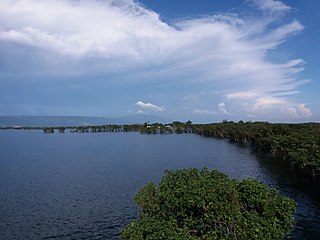
A haor is a wetland ecosystem in the north eastern part of Bangladesh which physically is a bowl or saucer shaped shallow depression, also known as a backswamp. During monsoons haors receive surface runoff water from rivers and canals to become vast stretches of turbulent water.
The Tongi–Bhairab–Akhaura line is a railway line connecting Tongi and Akhaura, via Bhairab Bazar in Bangladesh. There is a branch line from Bhairab Bazar to Mymensingh via Gouripur. These tracks are under the jurisdiction of Bangladesh Railway.
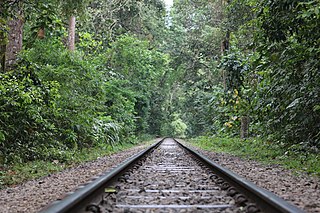
The Akhaura–Kulaura–Chhatak line is a railway line connecting Akhaura and Chhatak, via Kulaura in Bangladesh. This line is under the jurisdiction of Bangladesh Railway
The Akhaura–Laksam–Chittagong line is a railway line connecting Akhaura and Chittagong, via Laksam in Bangladesh. There are branch lines from Laksam to Chandpur and Noakhali. This line is under the jurisdiction of Bangladesh Railway.

The Assam Bengal Railway (ABR) was one of the pioneering railway companies in British India. Headquartered in Chittagong, it functioned from 1892 to 1942.

The divisions of Bangladesh are further divided into districts or zilas. The headquarters of a district is called the district seat. There are 64 districts in Bangladesh. The districts are further subdivided into 495 subdistricts or upazilas.
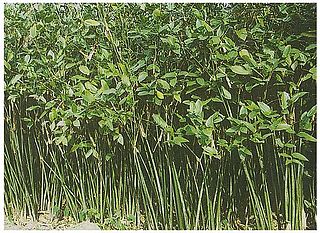
Schumannianthus is a genus of flowering plants in the family Marantaceae described in 1904.

The city of Chattogram (Chittagong) is traditionally centred around its seaport which has existed since the 4th century BCE. One of the world's oldest ports with a functional natural harbor for centuries, Chittagong appeared on ancient Greek and Roman maps, including on Ptolemy's world map. Chittagong port is the oldest and largest natural seaport and the busiest port of Bay of Bengal. It was located on the southern branch of the Silk Road. The city was home to the ancient independent Buddhist kingdoms of Bengal like Samatata and Harikela. It later fell under of the rule of the Gupta Empire, the Gauda Kingdom, the Pala Empire, the Chandra Dynasty, the Sena Dynasty and the Deva Dynasty of eastern Bengal. Arab Muslims traded with the port from as early as the 9th century. Historian Lama Taranath is of the view that the Buddhist king Gopichandra had his capital at Chittagong in the 10th century. According to Tibetan tradition, this century marked the birth of Tantric Buddhism in the region. The region has been explored by numerous historic travellers, most notably Ibn Battuta of Morocco who visited in the 14th century. During this time, the region was conquered and incorporated into the independent Sonargaon Sultanate by Fakhruddin Mubarak Shah in 1340 AD. Sultan Ghiyasuddin Azam Shah constructed a highway from Chittagong to Chandpur and ordered the construction of many lavish mosques and tombs. After the defeat of the Sultan of Bengal Ghiyasuddin Mahmud Shah in the hands of Sher Shah Suri in 1538, the Arakanese Kingdom of Mrauk U managed to regain Chittagong. From this time onward, until its conquest by the Mughal Empire, the region was under the control of the Portuguese and the Magh pirates for 128 years.

Nouka Baich is a traditional dragon boat-style paddling sport of Bangladesh. The Bangladesh Rowing Federation, established in 1974, is the authority of all rowing activities in Bangladesh and has organised over 40 National Rowing Championships. The races are held during the wet and autumn seasons of the Bengali calendar which corresponds from June to October in the Gregorian calendar. The "Nowka Bais" which takes place annually in Birmingham is a leading cultural event in the West Midlands, United Kingdom attracting not only the Bangladeshi diaspora but a variety of cultures. It is also the largest kind of boat race in the United Kingdom.

Sikhism in Bangladesh has an extensive heritage and history, although Sikhs had always been a minority community in Bengal. Their founder, Guru Nanak visited a number of places in Bengal in the early sixteenth century where he introduced Sikhism to locals and founded numerous establishments. In its early history, the Sikh gurus despatched their followers to propagate Sikh teachings in Bengal and issued hukamnamas to that region. Guru Tegh Bahadur lived in Bengal for two years, and his successor Guru Gobind Singh also visited the region. Sikhism in Bengal continued to exist during the colonial period as Sikhs found employment in the region, but it declined after the partition in 1947. Among the eighteen historical gurdwaras in Bangladesh, only five are extant. The Gurdwara Nanak Shahi of Dhaka is the principal and largest gurdwara in the country. The Sikh population in the country almost entirely consists of businessmen and government officials from the neighbouring Republic of India.

Sylhet railway station is a railway station in Bangladesh. There are two types of rail lines in Bangladesh Meter gauge and Broad gauge. This station is connected with meter-gauge link on both sides from Chhatak and Dhaka. This railway station is situated in Sylhet city.

Shia Muslims are a minority in Bangladesh, with roughly 2% of the population being Shia. Many Bangladeshi Shi'a Muslims belong to the Bihari community. Even though there are only small numbers of Shi'as, the observance commemorating the martyrdom of Ali's sons, Hasan and Husayn, are still widely observed by the nation's Sunni community; highlighting the historical influence that the Shi'ites had in Bengal.

Syed Abdul Majid, CIE, also known by his nickname Kaptan Miah, was a politician, lawyer and entrepreneur. He is notable for pioneering the development in the agricultural and tea industry in British India as well as his contributions to both secular and Islamic education in Sylhet.
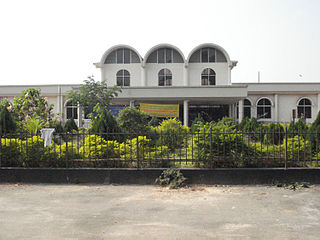
Akhaura Junction railway station is a railway junction located in Akhaura Upazila, Brahmanbaria District, Chittagong division, Bangladesh.

Abū Naṣr Muḥammad Waḥīd, or simply Abu Nasr Waheed, was a Bangladeshi Islamic scholar, educationist, author and politician. He is best known for his reformations to Islamic education in Bengal, and development of Arabic language education among Bengali Muslims. Wahid also served as the Education Minister of British Assam and a member of the Assam Legislative Assembly.
